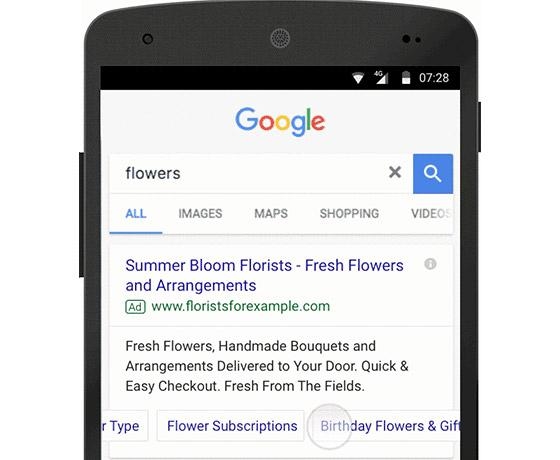Google Sitelinks, Callouts, Snippets To Deliver More Information
by Laurie Sullivan , Staff Writer @lauriesullivan, August 10, 2017

Later this month, Google will change how AdWords mobile ads display sitelinks, callouts and structured snippets. The goal is to make the ads increasingly clickable and callouts and structured snippets bigger.
Today, between two and four callouts are served, in addition to the ad text, when the callout extension appears with the ad on a computer or mobile device. The callouts highlight or summarize business offerings or promote products.
From Google’s image in the blog post, it appears that at least four will run in what looks like a movable carousel.
Similar to callouts, marketers can use structured snippets to highlight specific aspects of products and services. Marketers designing the page and/or ads should decide what information customers will find most valuable and then select a predefined header — Amenities, Courses, and Featured Hotels — for the snippet.
Early results show people are twice as likely to interact with the new sitelinks format, per internal data from Google. The new links provide click-through options that users can scroll through from side to side.
Previously, someone searching on a topic or brand would see a callout and structured snippet extensions beneath an ad. The new extensions will now appear beneath the copy. Google says it will allow more of the callout and snippet text to display.
In 2016, Google began using machine learning. It helps take a long sentence from a complicated page on the web, recognize patterns, and condense the information in Google search results. A Wiredarticle explains how the sentence compression algorithms work. It’s not clear whether the new snippet structure uses this algorithm.
The “sentence compression algorithms,” per Wired, went live on Google search for desktop last year. This demonstrates how deep learning continues to advance the art of natural language understanding — the ability to understand and respond to natural human speech.
MediaPost.com: Search Marketing Daily
(64)